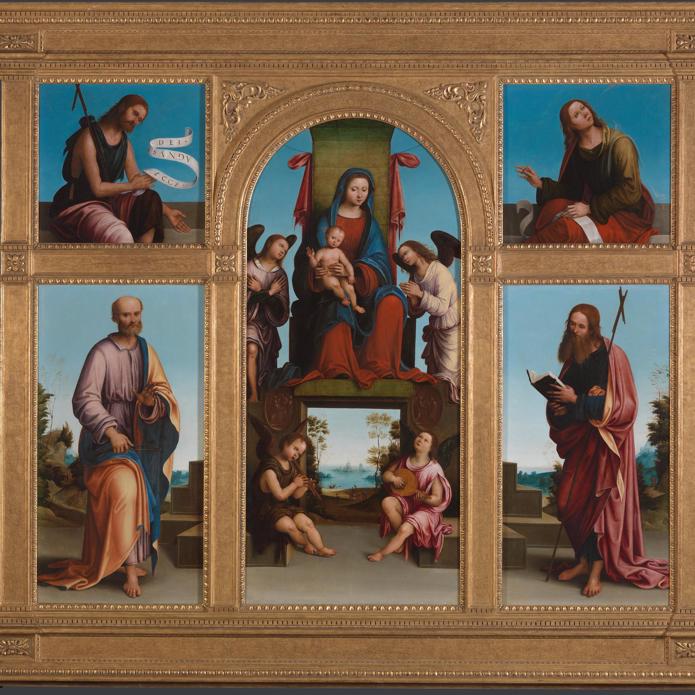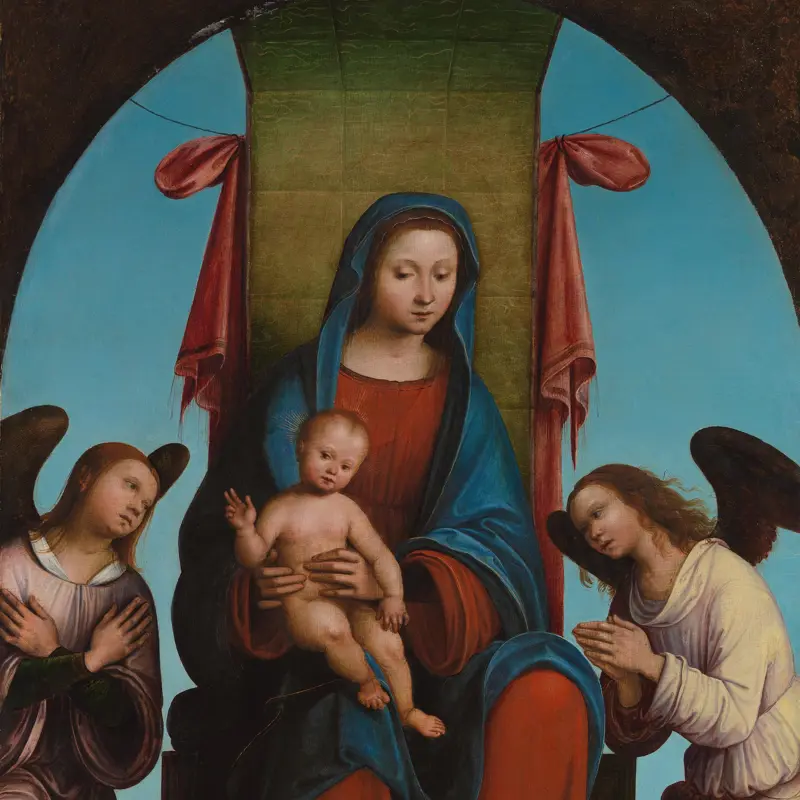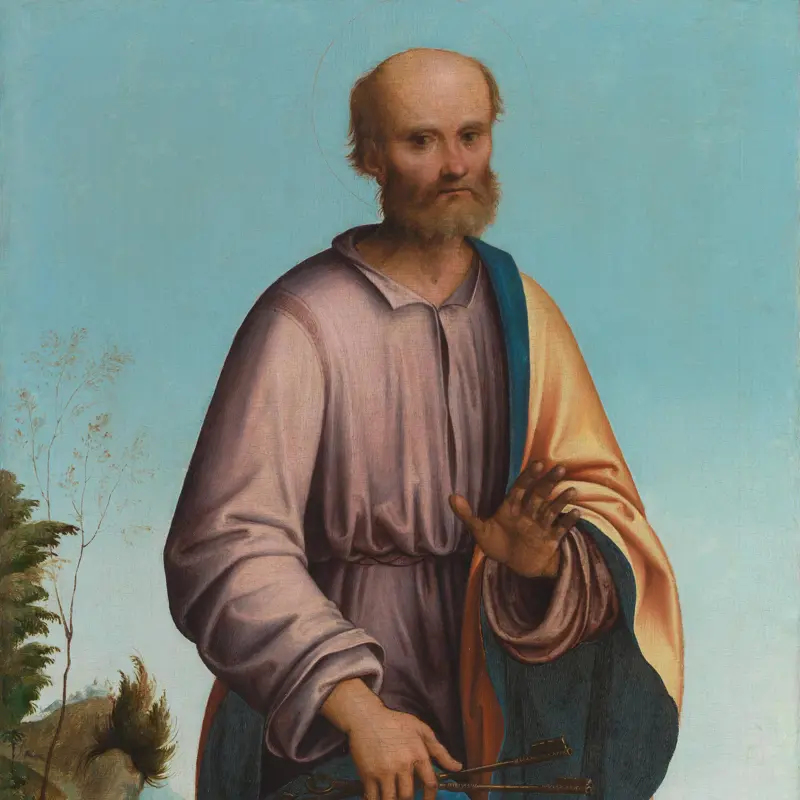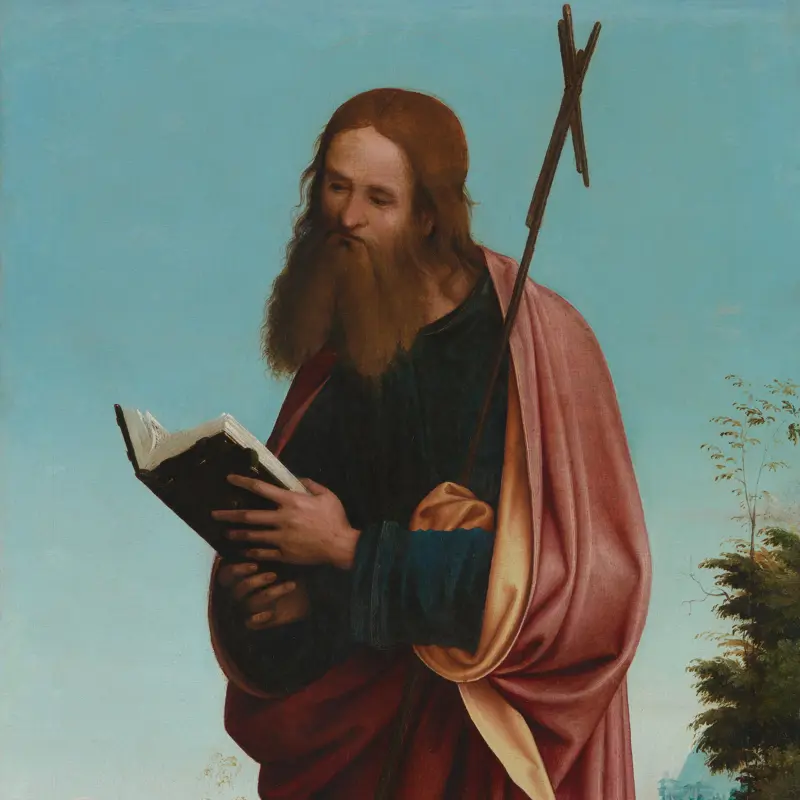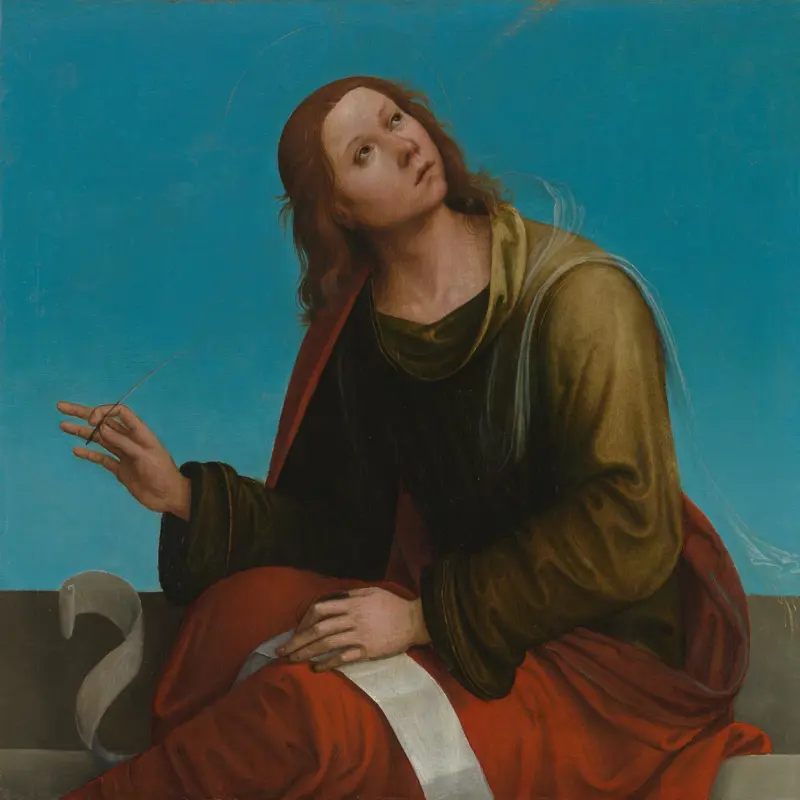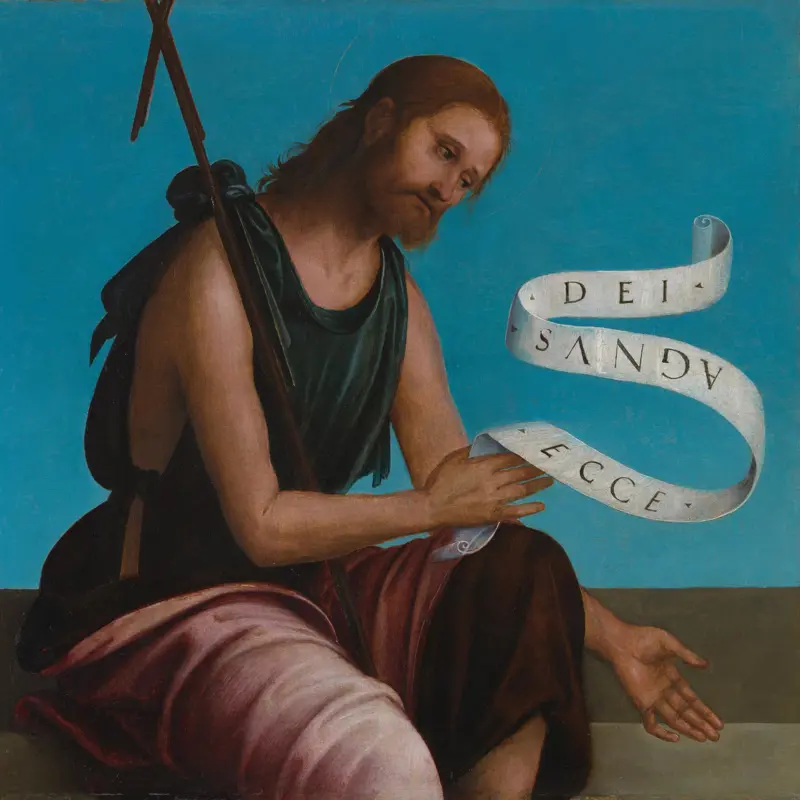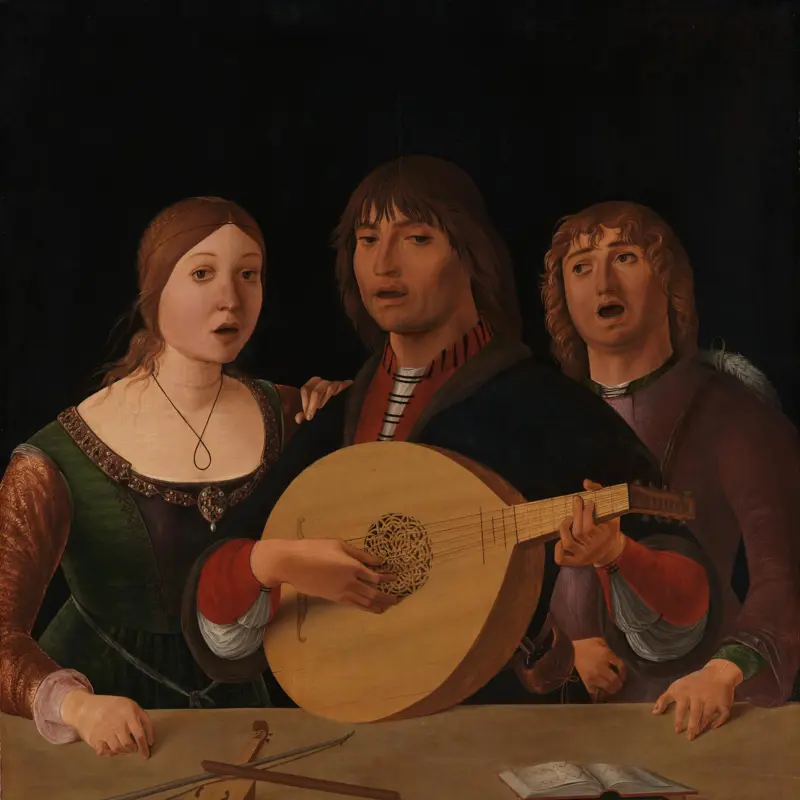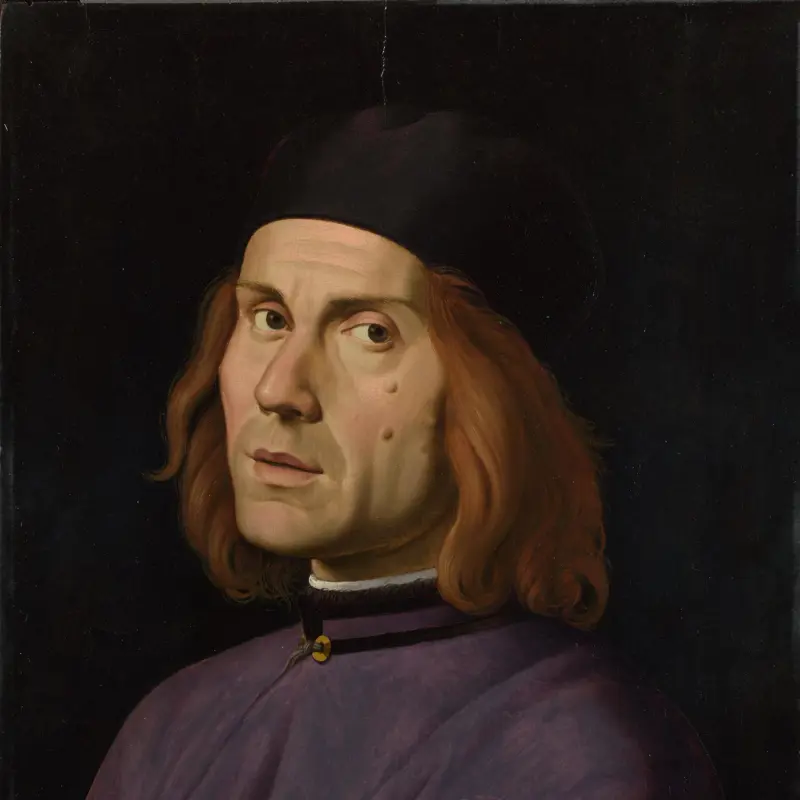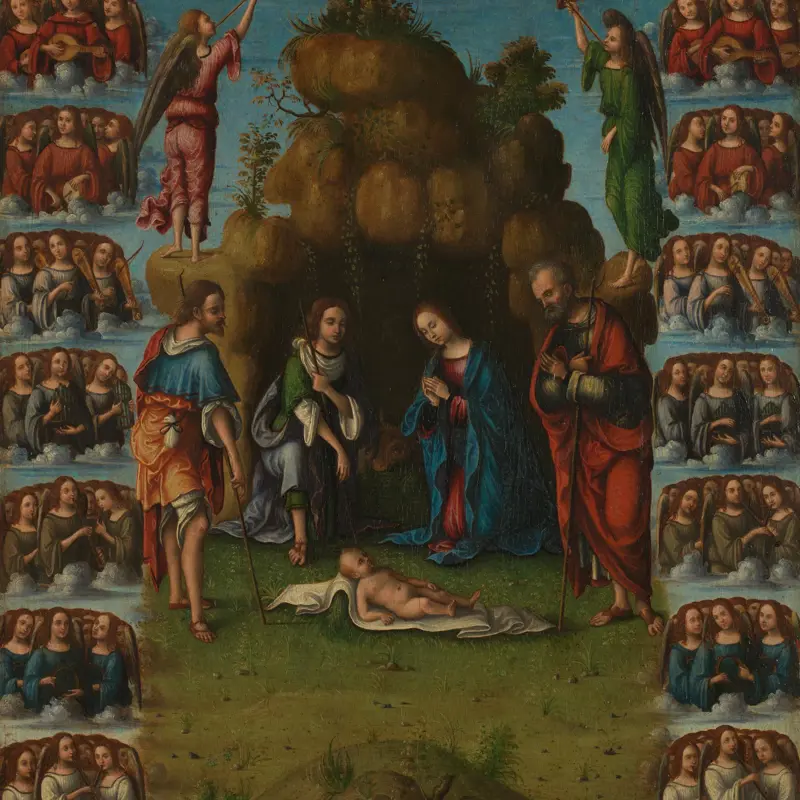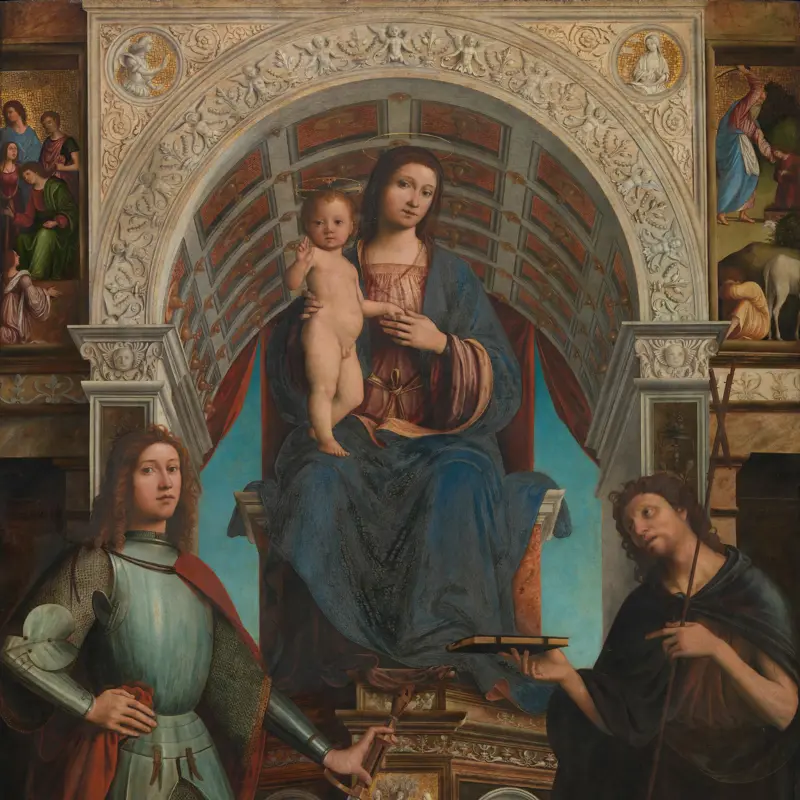Lorenzo Costa, 'Saint John the Baptist', 1505
About the work
Overview
Saint John the Baptist sits on a stone ledge, his attribute of a reed cross leaning against his shoulder. John was a hermit and prophet who lived in the wilderness, baptising people in the river Jordan and preaching repentance of sins. The scroll in his right hand bears a Latin inscription: ECCE AGNUS DEI (‘Behold the Lamb of God’). These are the words the saint spoke when he baptised Christ and recognised him as the Messiah.
This painting was part of the upper tier of a large, multi-panelled altarpiece made for the oratory of S. Pietro in Vincoli, Faenza, other parts of which are also in the National Gallery’s collection. The Virgin and Child appeared enthroned at the centre of the altarpiece; Saint John would originally have been looking at and gesturing to the infant Christ. A painting of Saint John the Evangelist appeared on the other side of The Virgin and Child.
Key facts
Details
- Full title
- Saint John the Baptist
- Artist
- Lorenzo Costa
- Artist dates
- 1460 - 1535
- Part of the group
- The High Altarpiece from San Pietro in Vincoli, Faenza
- Date made
- 1505
- Medium and support
- Oil, originally on wood, transferred to canvas
- Dimensions
- 55.2 × 57.1 cm
- Inscription summary
- Signed; Dated and inscribed
- Acquisition credit
- Bought, 1859
- Inventory number
- NG629.5
- Location
- Room 61
- Collection
- Main Collection
Provenance
Additional information
Text extracted from the ‘Provenance’ section of the catalogue entry in Giorgia Mancini and Nicholas Penny, ‘National Gallery Catalogues: The Sixteenth Century Italian Paintings’, vol. 3, ‘Bologna and Ferrara’, London 2016; for further information, see the full catalogue entry.
Bibliography
-
1962Gould, Cecil, National Gallery Catalogues: The Sixteenth Century Italian Schools (excluding the Venetian), London 1962
-
1987Gould, Cecil, National Gallery Catalogues: The Sixteenth Century Italian Schools, London 1987
-
2001
C. Baker and T. Henry, The National Gallery: Complete Illustrated Catalogue, London 2001
-
2016Mancini, Giorgia, and Nicholas Penny, National Gallery Catalogues: The Sixteenth Century Italian Paintings, 3, Bologna and Ferrara, London 2016
About this record
If you know more about this work or have spotted an error, please contact us. Please note that exhibition histories are listed from 2009 onwards. Bibliographies may not be complete; more comprehensive information is available in the National Gallery Library.
Images
About the group: The High Altarpiece from San Pietro in Vincoli, Faenza
Overview
These five paintings were once part of a large multi-panel altarpiece, or polyptych, made for the high altar of the Oratory of S. Pietro in Vincoli, Faenza. It was originally topped by a horizontal panel, now lost, showing the dead Christ supported by angels.
Although the altarpiece has been dismembered and its original frame – an important part of the ensemble – is lost, we can tell how it would have been arranged by comparison with existing polyptychs and designs for them, and from the paintings themselves. The Virgin and Child evidently appeared in an arched niche: the dark curved areas to either side of the Virgin’s head would have been covered by the frame. They were flanked by Saints Peter and Philip in the lower register, with Saints John the Evangelist and John the Baptist above.
Lorenzo Costa has signed and dated the central panel in Latin, making it look like an inscription at the top of the door frame: LAURENTIUS COSTA F[ECIT] 1505.

